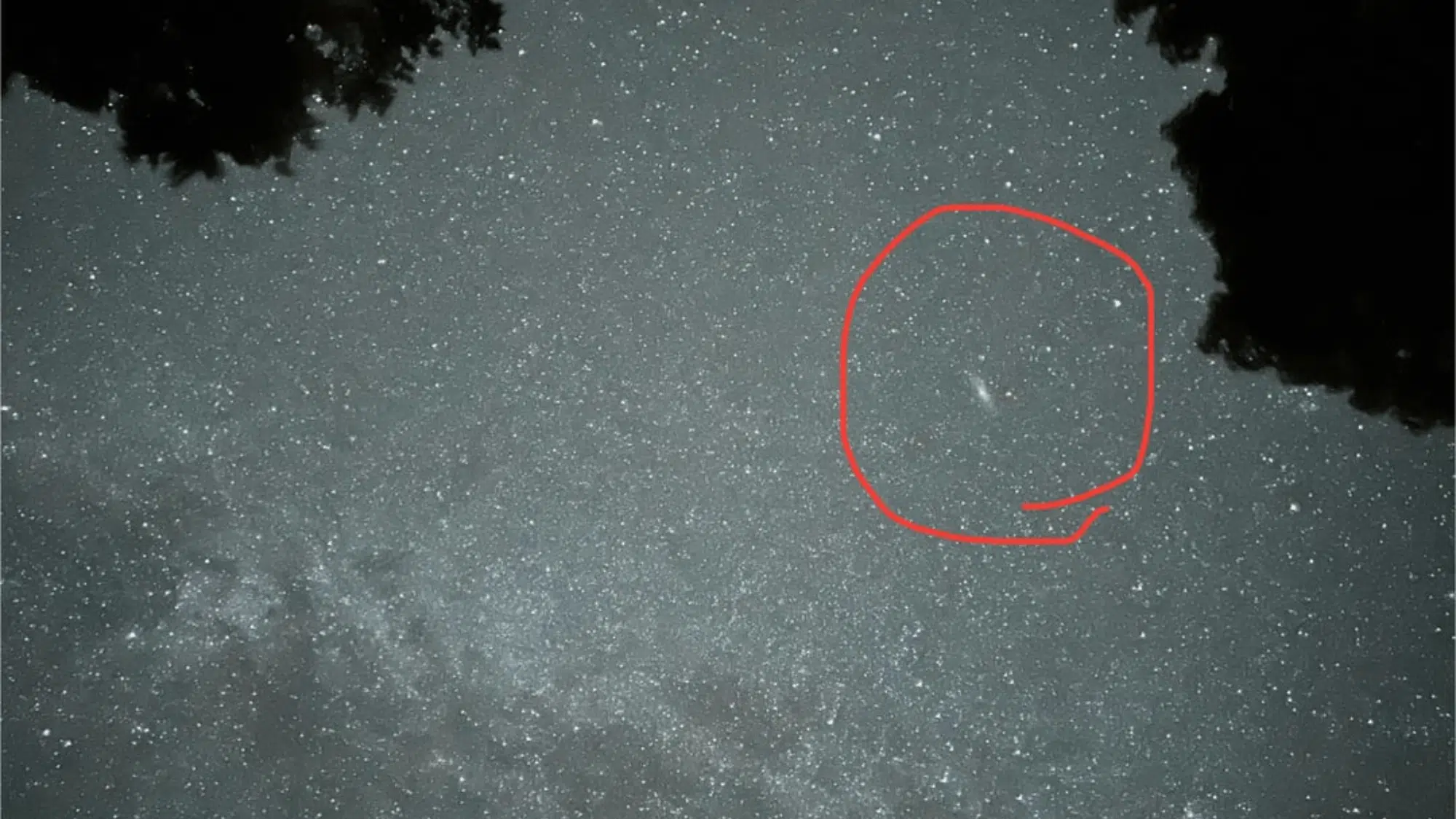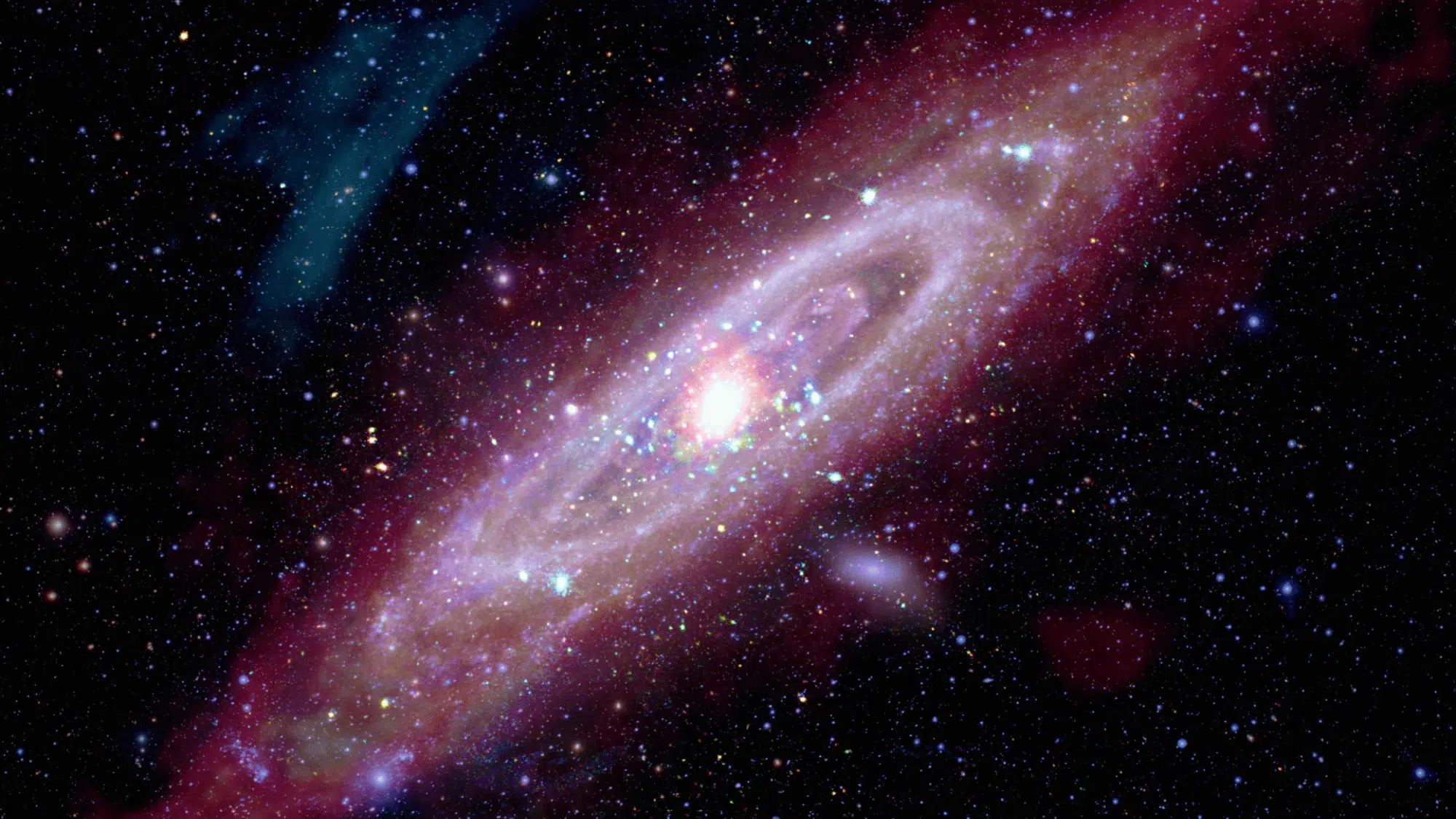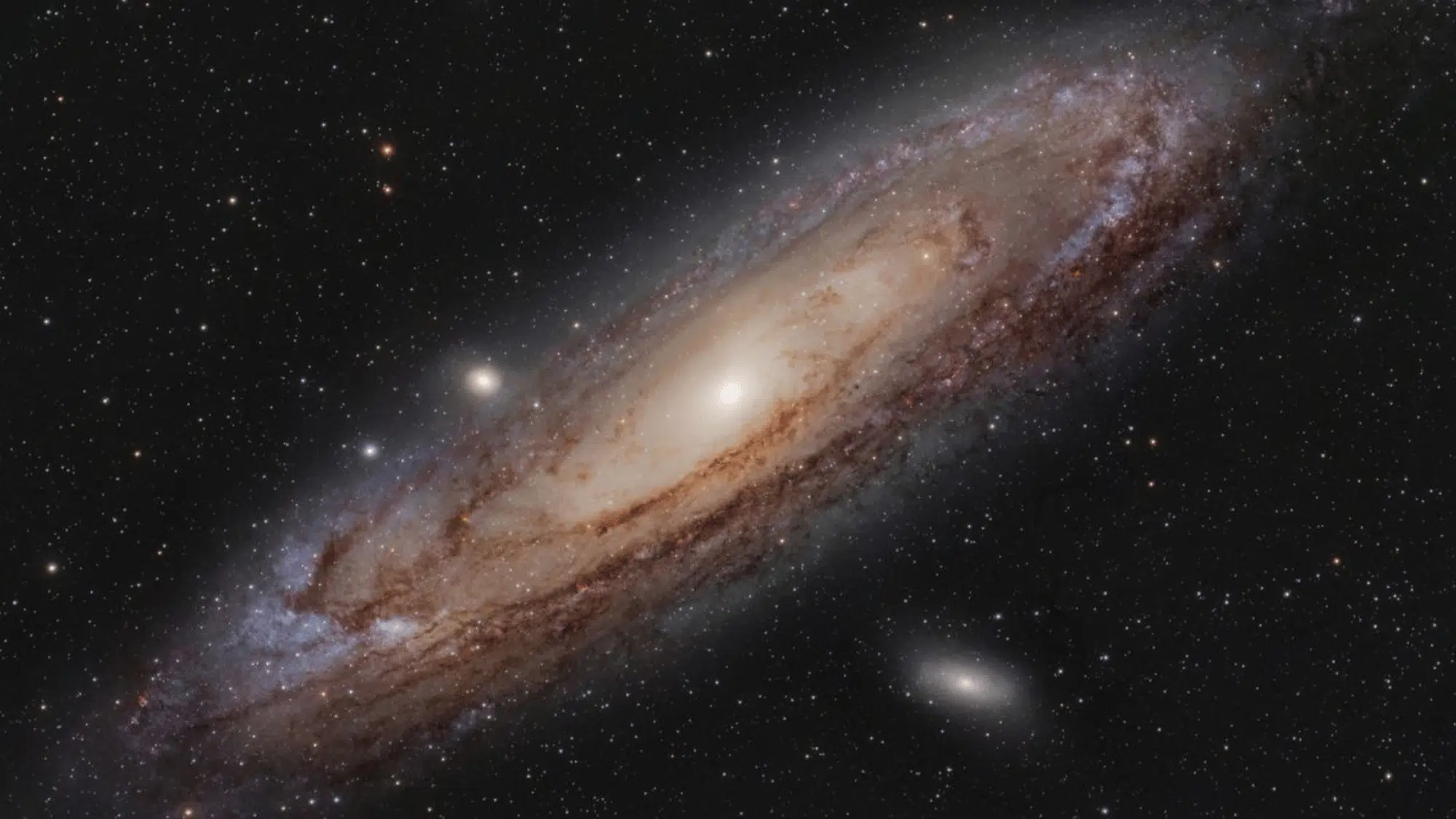For centuries, people have gazed at the night sky, captivated by the idea that some of its wonders can be seen without any special equipment.
Among the most fascinating sights is the Andromeda Galaxy, our closest large galactic neighbor, located approximately 2.5 million light-years away.
Distant galaxies that require powerful telescopes, this one sparks curiosity because it raises a simple but thrilling question: Can the Andromeda Galaxy be seen with the naked eye?
While described in astronomy books as a faint smudge of light, its visibility depends on conditions that many casual stargazers may not realize.
What is the Andromeda Galaxy?
The Andromeda Galaxy is the nearest large galaxy to the Milky Way, located about 2.5 million light-years away.
It is an awe-inspiring cosmic neighbor, stretching more than 220,000 light-years across, making it more than twice the size of our own galaxy.
Within its vast spiral arms, scientists estimate there are around one trillion stars, along with countless planets, star clusters, and nebulae.
Astronomers have discovered that the two galaxies are slowly moving toward each other and will eventually collide and merge in roughly 4 to 5 billion years, forming a completely new galaxy.
Beyond its scientific importance, Andromeda captures the imagination of stargazers because it is one of the few galaxies visible from Earth with the naked eye.
Can the Andromeda Galaxy Be Seen with the Naked Eye?


Image Source: Reddit
Yes, the Andromeda Galaxy can be seen with the naked eye, but only under the right conditions. To most observers, it doesn’t appear as the shining spiral captured in Hubble images.
Instead, it shows up as a faint, extended smudge of light in the night sky. Its visibility depends on factors like dark skies, minimal light pollution, and clear weather.
For beginners, the sight may feel underwhelming at first, but once recognized, it’s remarkable to realize that the tiny blur is actually another galaxy filled with a trillion stars.
The difference between photographs and reality comes from long-exposure imaging cameras, which can capture details and colors that the human eye simply cannot.
Still, spotting Andromeda without a telescope is an unforgettable experience that connects viewers directly to the vast universe beyond the Milky Way.
Best Conditions for Spotting the Andromeda Galaxy
The Andromeda Galaxy is best viewed under specific conditions, where timing, location, and sky clarity work together to reveal its faint but remarkable glow.
- Dark skies matter most: City lights easily overpower Andromeda’s faint glow, so traveling to rural areas or designated dark-sky reserves offers the best viewing opportunities.
- Seasonal timing: The Andromeda Galaxy shines brightest between September and November, making late summer through early winter the most reliable viewing season.
- Right time of night: Aim for moonless nights, when the sky is darkest and Andromeda rises high above the horizon, offering clearer and sharper visibility.
- Helpful tools: Stargazing apps, sky maps, or printed star charts provide step-by-step guidance to pinpoint Andromeda’s exact position in the vast night sky.
- Patience pays off: Allowing eyes to adjust, practicing under different conditions, and being persistent eventually rewards observers with Andromeda’s breathtaking naked-eye appearance.
Why People Struggle to See the Andromeda Galaxy?


Image Source: SciNews
Spotting the Andromeda Galaxy with the naked eye can be a rewarding experience, but it isn’t always as simple as looking up.
Several factors make it difficult to see, especially for beginners. Light pollution from cities is the biggest obstacle, as even moderate urban glow can completely hide its faint light.
Similarly, a bright or full Moon reduces visibility by washing out the subtle details of the night sky. One of the most common myths is that the Andromeda Galaxy cannot be seen without a telescope.
In truth, it is one of the few galaxies visible to the unaided eye under dark, clear conditions. Another misconception comes from expecting it to resemble colorful long-exposure photos.
To the human eye, Andromeda appears as a soft, hazy patch, but recognizing it makes the view truly magical.
Where and When You Can Watch the Andromeda Galaxy
The Andromeda Galaxy is visible from most parts of the Northern Hemisphere, specifically in areas far from city lights.
It can usually be spotted from late summer through early winter, with September to November offering the best visibility.
During this period, Andromeda rises high in the eastern sky after sunset and remains visible for most of the night. Rural locations or designated dark-sky parks provide ideal viewing conditions, free from light pollution.
Observers in the Southern Hemisphere can also catch a glimpse, though it appears lower on the horizon.
The perfect combination of dark skies, clear weather, and patience allows stargazers to witness this distant galaxy with their own eyes.
Tips to Spot the Andromeda Galaxy
Spotting the Andromeda Galaxy may seem challenging at first, but with the right tips and a little patience, anyone can enjoy this breathtaking sight.
- Use binoculars: If a person’s skies aren’t perfectly dark, binoculars can magnify Andromeda’s faint glow, making it much easier to identify compared to relying on naked-eye observation.
- Let eyes adjust: Allow 20–30 minutes in complete darkness without exposure to bright lights, allowing your eyes to naturally adapt and strengthen night vision.
- Train your eyes: Over time, their vision will learn to detect Andromeda’s soft glow, blending faintly into the surrounding stars of the night sky.
- Check weather conditions: Cloudy or hazy skies significantly reduce visibility, so aim for clear nights with low humidity to maximize your chances of success.
- Use a star chart or app: Digital stargazing apps or simple star maps help guide beginners precisely to Andromeda’s location, preventing unnecessary confusion while searching.
Conclusion
The Andromeda Galaxy can be seen with the naked eye, though the experience is subtler than the shining photographs we often imagine.
Instead of a colorful spiral, it appears as a faint, misty patch in the night sky, a quiet glimpse into the vast universe beyond our Milky Way.
That small, soft glow represents an entire galaxy of stars and worlds, offering a humbling connection to the cosmos.
For many stargazers, recognizing Andromeda sparks lasting curiosity and amazement. Readers are encouraged to share their own stargazing experiences and inspire others to look upward.


















